One of the things you hear these days from the crowd that seems intent on disarming the American public is the idea that there are enormous numbers of accidental firearms deaths among children. This is from the Washington Post:
As the National Rifle Association’s annual conference hits Nashville this weekend with 70,000 expected attendees, the organization has good reason to be upbeat. For another year, it has succeeded in stalling legislative attempts at moderate gun controls, rolling back existing state regulations and winning media battles. But there’s a looming question that should be seriously concerning the NRA and its supporters: how to reconcile the organization’s agenda with new evidence on the prevalence of gun accidents involving children.
Over the past year, new studies and media reports have documented America’s extraordinary number of child-involved shootings. These occur when a child happens upon a gun, or is left alone with one, and ends up shooting themselves or another person. Such disasters result in hundreds of child fatalities and have made American children nine times more likely to die in gun accidents than children anywhere else in the developed world. These deaths pose a massive challenge for the NRA. They demonstrate fairly conclusively that guns cannot be both safe and ubiquitous; the inevitable consequence of widespread gun ownership is a never-ending series of tragedies involving children. But, desperate to insist there’s nothing wrong, the NRA has proved itself totally incapable of responding to the problem.
Here is an article in Forbes:
Today, 19 children will die or receive emergency treatment for a gunshot wound in the U.S. And tomorrow, another 19 will. And then another 19 the next day. In fact, 91% of all children who die from firearms in high-income countries across the world come from the United States, and guns are the third leading cause of death for all children between ages 1 and 17. Those are a handful of the sobering statistics reported in a new study on gun violence in Pediatrics.
Yet the myth persists that the freedom to own a gun without a universal requirement of background checks or a legal requirement to store those guns safely and out of children’s reach supersedes the lives of American children. Until the U.S. as a whole decides to recognize and accept what the tremendous cost of current lenient gun laws is, more than 1,000 more children will die next year. And the year after that.
Background checks are already a universal requirement, including the used market. But, from this kind of rhetoric, you would think that children are dying all over the place from accidental firearm deaths. Typically, there is a conflating of all deaths from firearms with accidental deaths. A “child” is commonly defined as age 0-17, even ages 0-19 in some cases. A lot of teenagers are involved in gangs and drugs, and the shootings that result from this criminal activity. Plus, teenage suicide accounts for a lot of deaths, just as suicide is the main cause of death from firearms among the population in general, although the U.S.’s suicide rate is about the same as Europe.
Here is one example of propagandistic language:
EXAMINING ACCIDENTAL SHOOTING DEATH STATISTICS
Accidental shooting death statistics can be a sobering reminder of mortality, but they are important in promoting prevention measures. For those families dealing with the death of a loved one from an accidental shooting, statistics can seem cold and unfeeling. But it’s important to put these statistics in front of others because they give some perspective on how big an issue accidental shooting deaths really are in the United States.
STATISTICS FOR ACCIDENTAL SHOOTING DEATHS
In 2016 there were 161,374 deaths from unintentional injuries, the overall 3rd ranking cause of death that year.
From 2006-2016, almost 6,885 people in the U.S. died from unintentional shootings. In 2016 alone, there were 495 incidents of accidental firearm deaths.
Accidental gun deaths occur mainly in those under 25 years old. In 2014, 2,549 children (age 0-19) died by gunshot and an additional 13,576 were injured.
Did you get that? They want to make you think that 2,549 “children” (age 0-19) died from accidental gun deaths in 2014. They begin with a one-year total of all accidental deaths, then give an eleven-year total, 2006-2016 of 6,885 unintentional deaths (including adults) from firearms, then focus on “under 25,” and then cite 2,549 “children” who died from firearms from all causes, not just accidents.
(The source of this item is very strange. It is a “trauma site cleanup company.” Yes, they wipe up the blood. Yet, this page is at the top of a Google search on the topic. And they say that “it is important to put these statistics in front of others,” although the statistics are basically phony.)
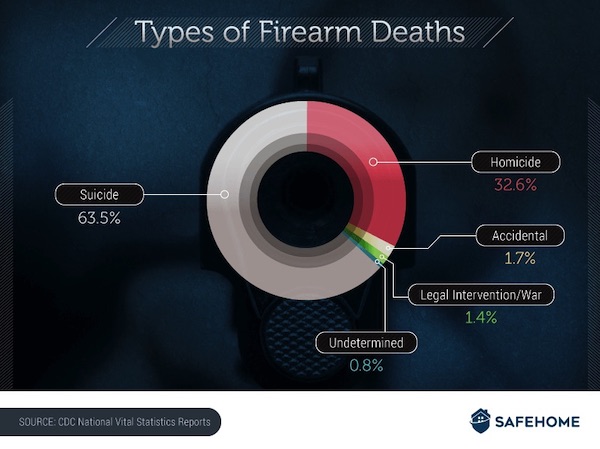
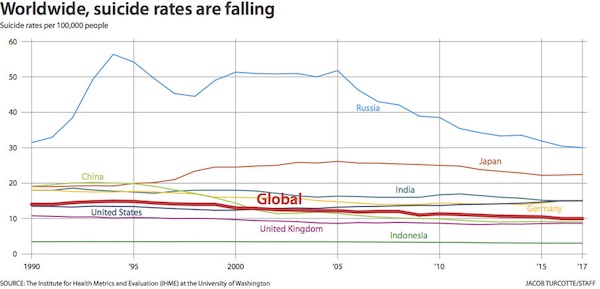
The Center for Disease Control keeps track of deaths of all causes. Here is the data for 2017:
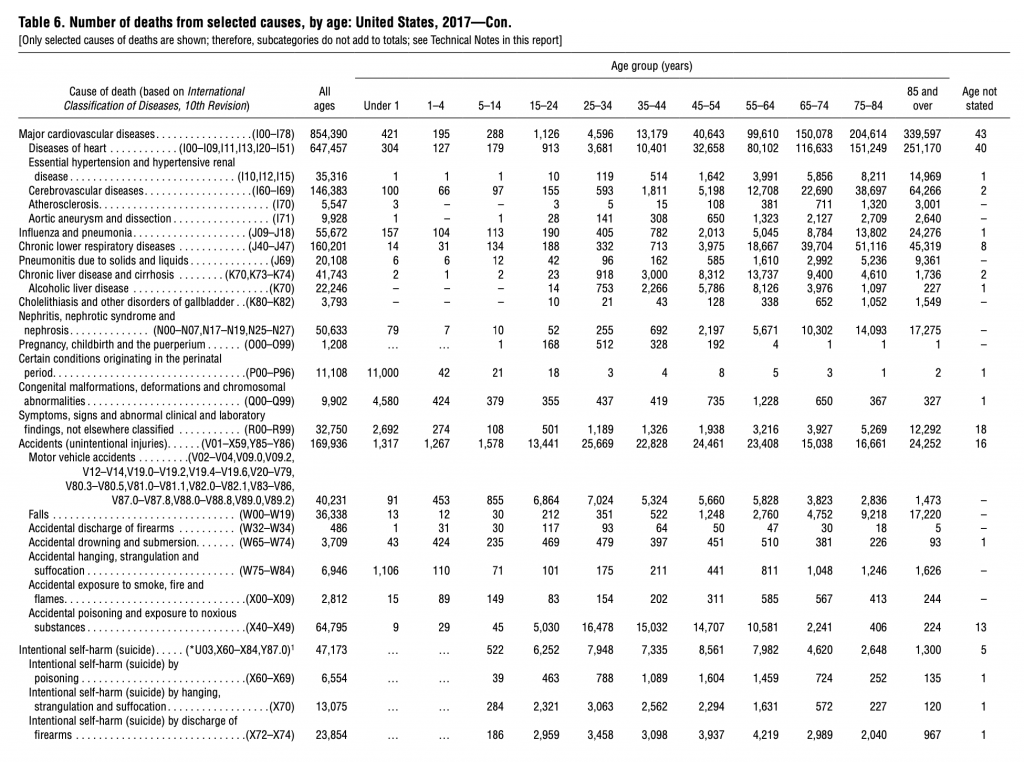
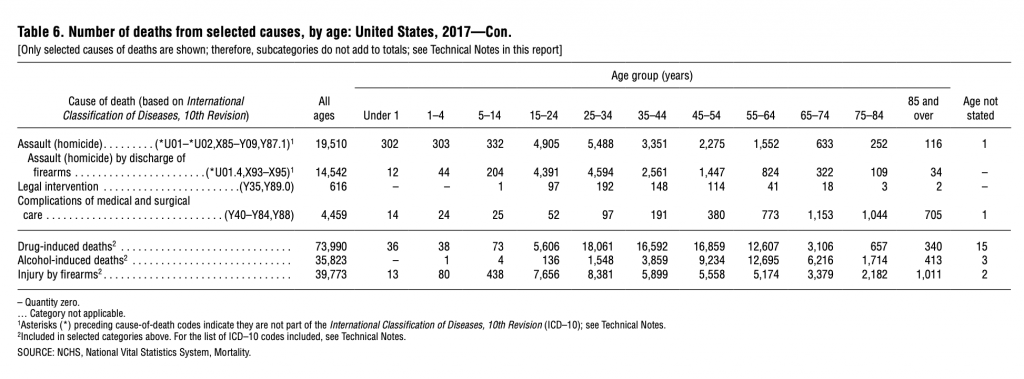
This data makes a break at age 14, which is closer to what we mean by “child” in this case. We can see that, in 2017, accidental discharge of firearms accounted for 62 deaths for children age 0-14, out of 4,162 deaths from accidents, or 1.5% of all deaths from accidents. Suicide accounted for 522 deaths (with strangulation the most common method), and homicide 937 deaths. Drowning accounted for 702 deaths, and motor vehicles 1,399. Football accounted for about 13 deaths, among 4.1 million children who play football.
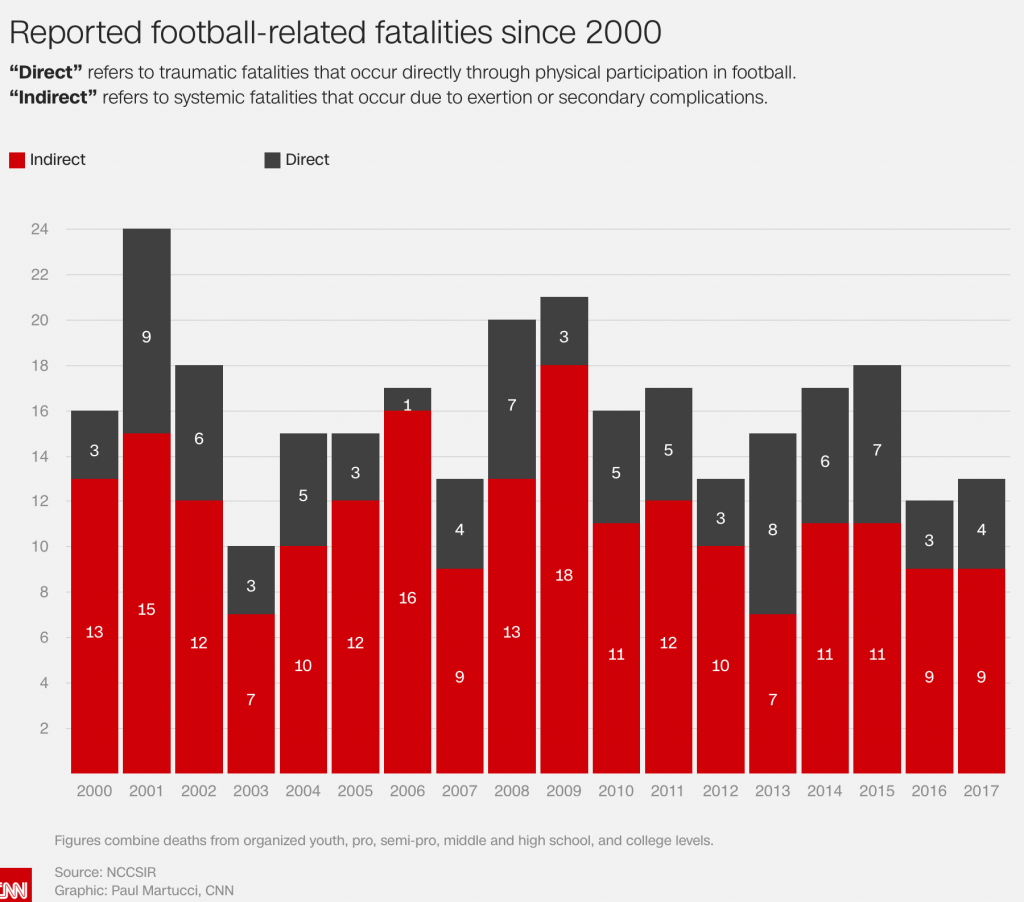
When you consider how many households have firearms (about 50 million), this is not a particularly high fatality rate. (It is below the fatality rate for households where children play football.) It appears that the risk to children of having a swimming pool is about twenty times higher than owning firearms.
In effect, this hysteria produces a kind of “operant conditioning.” This is basically Pavlov’s dog: the dog salivates when it hears the bell, even though there is no food. “Operant conditioning” produces the desired reaction, bypassing all rational thought. Much of modern education is based on it. It produces blind obedience — salivating on command — and the habit of reacting without rational thought.
Terrified parents (many of whom own swimming pools) don’t want to keep firearms in the house, teach their children to never touch firearms, and are eager to support gun-control laws, to protect the children of other people, naturally. All of this happens without much rational thought, like a dog salivating to the bell rung by the propaganda media. This is very different from much of American history, where children would be taught proper firearm use (including safety) from an early age, not only for hunting but as part of the principle that all American adult men should be armed.
“I enclose you a list of the killed, wounded, and captives of the enemy from the commencement of hostilities at Lexington in April, 1775, until November, 1777, since which there has been no event of any consequence … I think that upon the whole it has been about one half the number lost by them, in some instances more, but in others less. This difference is ascribed to our superiority in taking aim when we fire; every soldier in our army having been intimate with his gun from his infancy.”
– Thomas Jefferson, letter to Giovanni Fabbroni, June 8, 1778
“[W]hen the resolution of enslaving America was formed in Great Britain, the British Parliament was advised by an artful man, who was governor of Pennsylvania, to disarm the people; that it was the best and most effectual way to enslave them; but that they should not do it openly, but weaken them, and let them sink gradually.”. . . I ask, who are the militia? They consist now of the whole people, except a few public officers.”
George Mason — Virginia’s U.S. Constitution ratification convention, 1788
“A militia when properly formed are in fact the people themselves . . . and include all men capable of bearing arms. . . To preserve liberty it is essential that the whole body of people always possess arms… The mind that aims at a select militia, must be influenced by a truly anti-republican principle.”
Richard Henry Lee — Additional Letters From The Federal Farmer, 1788
“Before a standing army can rule, the people must be disarmed; as they are in almost every kingdom in Europe. The supreme power in America cannot enforce unjust laws by the sword; because the whole body of the people are armed, and constitute a force superior to any band of regular troops that can be, on any pretence, raised in the United States. A military force, at the command of Congress, can execute no laws, but such as the people perceive to be just and constitutional; for they will possess the power.”
Noah Webster — An Examination of The Leading Principles of the Federal Constitution, Philadelphia, 1787
It is probably not a good idea to give up these core principles of American liberty over 62 deaths per year.

Accidental deaths from firearms among children have come down over the past couple decades, and one reason is the increasing use of gun safes and trigger locks — a healthy trend, although I am not sure that I would make it a legal requirement. But, there is not much reason for hysteria over the quite low levels of accidental gun deaths among children today. All in all, it has been surprisingly safe, especially given how many households have firearms.

